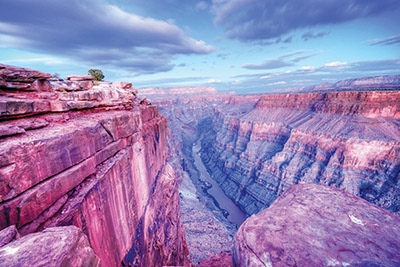
I am always amazed by airports. It’s incredible that from every gate throughout the terminals, planes depart for different places all over Earth. One gate off, and you can end up in Frankfurt instead of Honolulu, Istanbul instead of Tel Aviv.
Airports are designed to be a microcosm of its country. As soon as arrivals walk into the terminal they are greeted with signs and sights that clearly display where they are.
Last week, my daughter Aviva and I had the opportunity to visit our friends, Rabbi Menachem and Shifra Moskovitz, in their home in Las Vegas, Nevada. As soon as we walked off the plane, we were greeted by slot machines and the endemic bright lights. That was even before we encountered the trademark “Welcome to Las Vegas” sign.
We very much enjoyed the warmth and vibrancy of the burgeoning Jewish community. I had the opportunity to speak at the Mesivta of Las Vegas on Friday, and in the Las Vegas Kollel on Shabbos morning. I noted in my speech that the only thing in Vegas that is definitely not a gamble is the warmth of the community.
On Sunday morning, Aviva, Ahuva Moskovitz and I visited the Hoover Dam, which is fairly close to Las Vegas. It’s quite an imposing and breathtaking structure, built in the 1930s. From there we headed to the Western Rim of the Grand Canyon.
Standing before the Grand Canyon is a humbling experience. The sheer majesty of the incredible canyon is breathtaking. It is hard to fathom how gargantuan it is, and it is surely impossible to describe. They are so vast, that it is quite noticeable from the window of a plane flying overhead. All of the beautiful panoramic sceneries and beautiful views I have seen during my life are dwarfed by the “opulent depth” of the Grand Canyon.
The next day I saw a picture of a beautiful scenery. My immediate reaction was to think that the picture was nothing in comparison with the Grand Canyon! “If you think that’s anything, you should go to the Grand Canyon!” But the truth is that such an attitude is a mistaken perspective about that experience.
There is a fundamental passage in the Ramban at the end of Parshas Bo, in which he details important ideas about faith and service of Hashem. He writes there that “from the great and widespread miracles, man will come to admit/thank (God) for all of the hidden miracles, which is the foundation of the entire Torah, for no one has a portion in the Torah of Moshe Rabbeinu until he believes that all of our happenings are miracles, and that there is no nature…”
Seeing the Grand Canyon, or any other incredible sight, should not make its viewer feel unimpressed by anything less. Au contraire! It should fill him with a sense of wonder at the beauty of God’s creation and bring him to feel love and appreciation for every facet of His incredible creation. My experience at the Grand Canyon should lead me to feel a greater appreciation for the mundane of nature, not the other way around.
I type these words in the waning moments of Tu B’Shevat. It is a minor holiday when we do not recite tachanun, try to eat some fruits, and perhaps daven for our esrog on Sukkos. On a practical level, it is a day to contemplate the miracle of fruits, and nature in general. The fact that we are able to partake of numerous fruits with various textures, colors and tastes during the dead of the winter is itself incredible.
Tu B’Shevat is a celebration of the miracle of nature. It is also 30 days before Purim, when we celebrate the uncanny miracles that were also cloaked in natural events. From there we set out for Pesach, the holiday of redemption, when God displayed His power of nature and bent all its rules, to demonstrate His unmitigated love for us.
Tu B’Shevat is celebrated after the reading of the parshios that detail the Exodus and all of its miracles. As Ramban states, the open miracles help us appreciate the hidden miracles. Reading the Torah’s account of those miracles serves as an appropriate introduction to Tu B’Shvat. Then we continue the progression, until we actually celebrate those open miracles on Pesach. In that sense, it is a beautiful, elevating circle—from the miraculous to the natural, back to the supernatural—all a combination of God’s Hand.
I should conclude by saying that when we arrived back in Newark Airport, I knew we were home when I found my shoes sticking to the sticky and dirty floor. Like I said, every airport wants to make you feel what its city is like.
Rabbi Dani Staum, LMSW, is the rabbi of Kehillat New Hempstead as well as a rebbe and guidance counselor at Heichal HaTorah in Teaneck, New Jersey, principal at Mesivta Ohr Naftoli of New Windsor and a division head at Camp Dora Golding. He can be reached at stamtorah@gmail.com.
Looking for “instant inspiration” on the parsha in under five minutes? Follow him on TorahAnytime.com.











